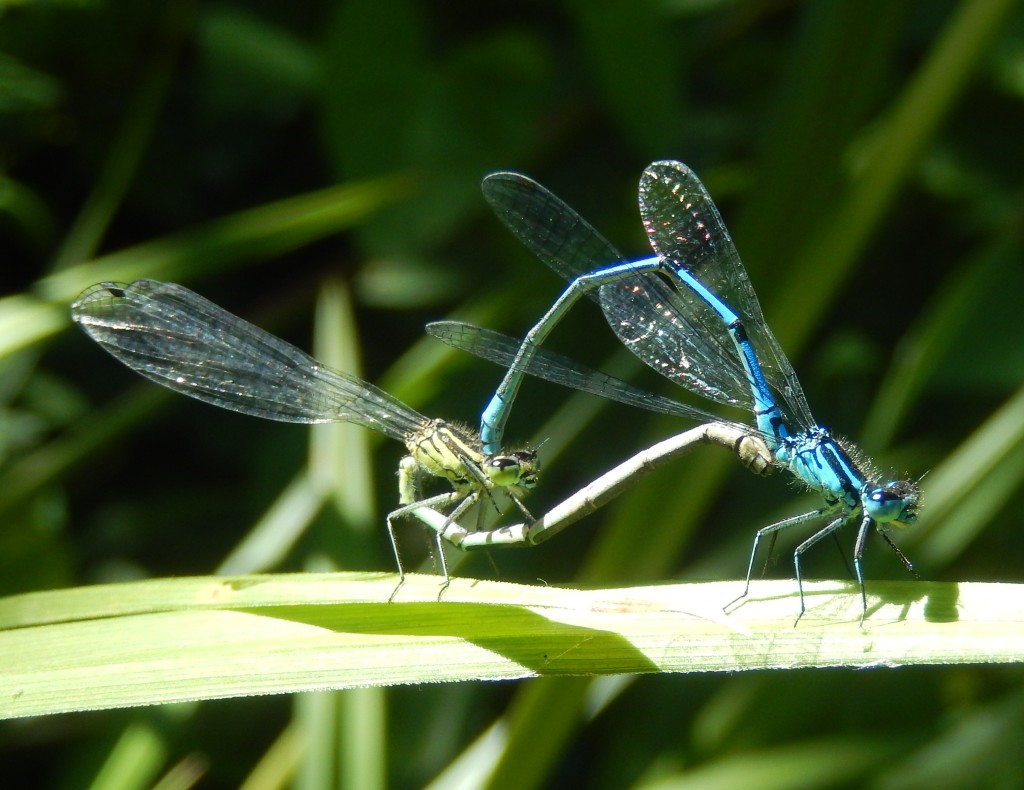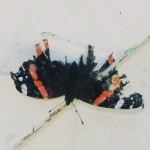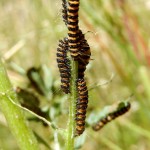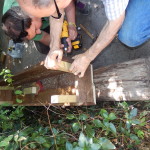
The pond is really low in the heat (and the grass is brown and crisp, and Birch trees large and small are dying). There are Large Red, Azure and Bluetail damselflies urgently laying eggs; this pair of Azures was in the incredibly complicated mating posture that we call the Heart or Wheel, with secondary genitalia locked on in preparation for transfer of the spermatophore; then the female does her thing with sperm storage. Bizarre.

If there’s an insect equivalent of a World War II Hurricane landing safely with most of its tailplane, rudder, and wings shot away, this battered but defiant Red Admiral must be it. I saw the odd outline and thought “Comma?” – then I saw the colours and thought “Hot weather, beaten-up butterfly, Painted Lady”; then it landed and I realized what it was.
Heat. It’s apparently the hottest day in England for nine years: right now it’s 33ºC here, and remarkably sticky.

Among the dry grass are an increasing number of Ragwort plants; at the moment, having seen just one Cinnabar moth flying briefly, there is also just one plant covered in Cinnabar caterpillars. They are aposematic: brightly coloured black and orange, warning, like wasps and bees, of their poisonous cocktail of chemicals picked up from their food plant. They seem to grow in numbers until they devastate the Ragwort population, which then crashes … which wipes out the Cinnabar moth, until a new outbreak of Ragwort restarts the cycle. It seems to me the nearest thing to the Lotka-Volterra model ever, given that the model basically predicts wild swings in population of “predator” and “prey”. For lynx and snowshoe hares it’s a wildly wrong model; for moths and Ragwort, maybe there’s something in it.

We spent some happy hours cutting up a lot of wood to make two large “planters” to disguise the green metal box of a shed in the car park. The plants will need constant watering, which sounds a bit of a problem, but maybe for annuals it’ll do fine. We nicknamed the planters “crocodile coffins” as they are the size of young crocs and perfect for their funerals, if crocs need ceremonies.
Yesterday evening we had a fine view of the conjunction of Venus and Jupiter in the western sky, Venus an elegant bright crescent (evening star) on our side of the sun, Jupiter a smaller and dimmer star, visibly a complete disk, far away from us of course on the other side of the sun. The 80mm birdwatching telescope did a good job; of course it would be lovely to have a big astronomical telescope to get a bigger view.
